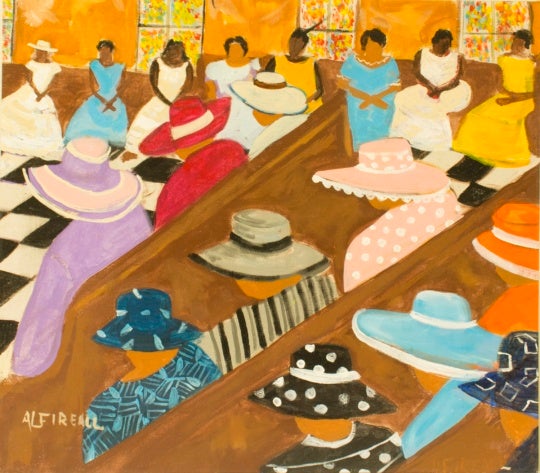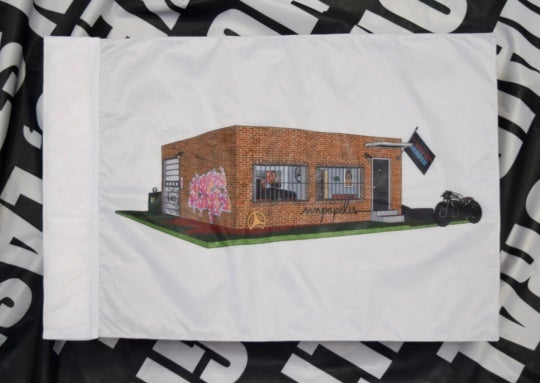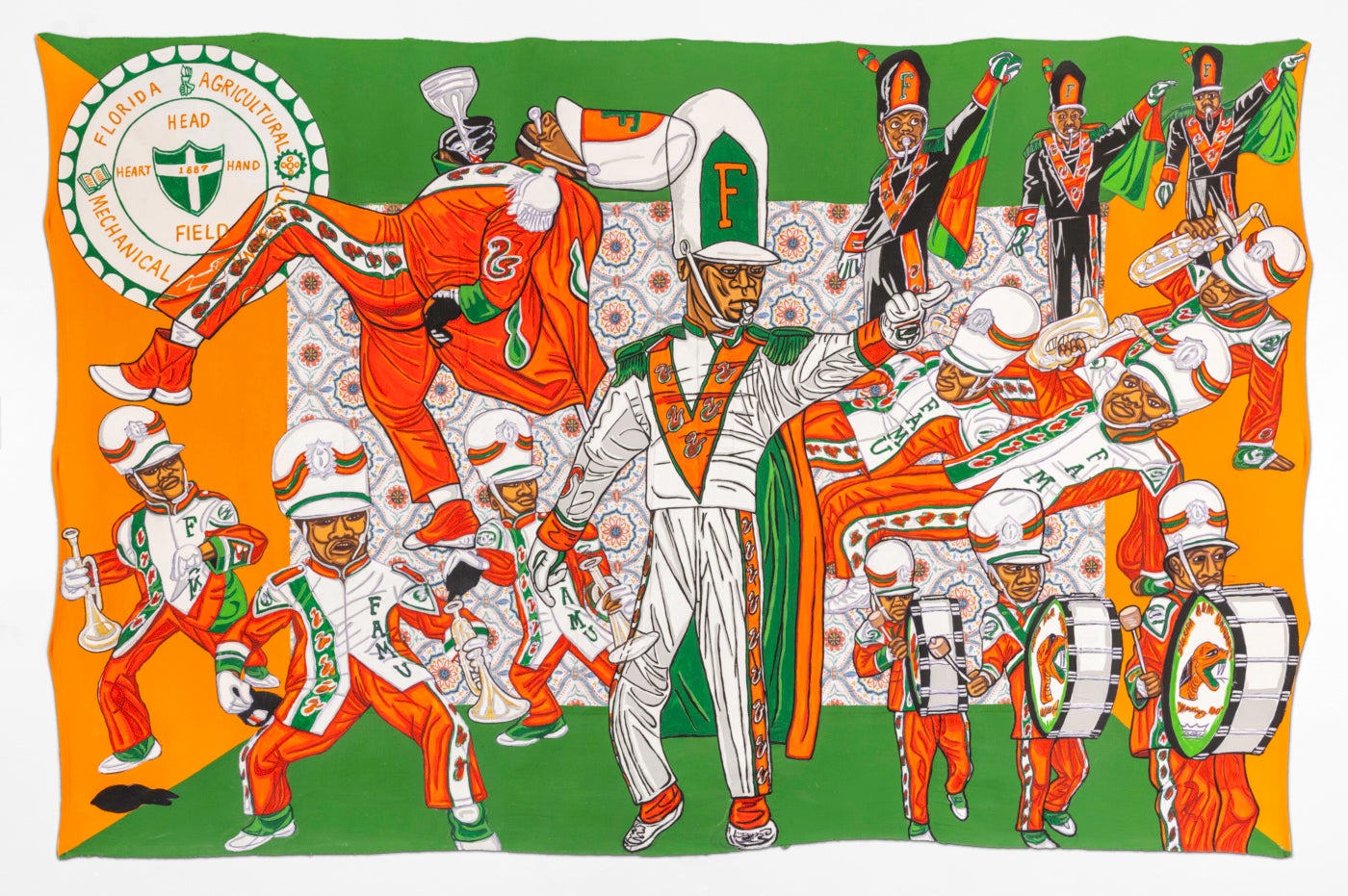
When Keith Duncan sees the marching bands at Historically Black Colleges and Universities (HBCUs), he sees pageantry, movement, and grace. To display the intricacies of HBCU marching band artistry, the Louisiana native draws on his childhood interest in comic books and the Southern tradition of textile art to create 45 total works featuring bands from 15 of the 107 HBCUs.
Using acrylic and marker on unstretched canvas, Duncan created three works for each school: two works of different sizes featuring drum majors and one large-scale work averaging 6×9ft featuring a number of drum majors, dancers, and musicians. Using this framework, Duncan explores ideas of family, pageantry, and artistry through the vibrant depictions of HBCU marching band members.
The HBCU marching band experience has been celebrated in a variety of pop culture moments, including Beyoncè’s 2018 Coachella performance, Beychella, and in the subsequent documentary, Homecoming: A Film by Beyoncè. Duncan captures on canvas the essence creators like Beyonce capture in their work, the unity, family, discipline, and extravagance of the HBCU marching band. It is a full-body experience for both the band members and the audience; everyone is moving.
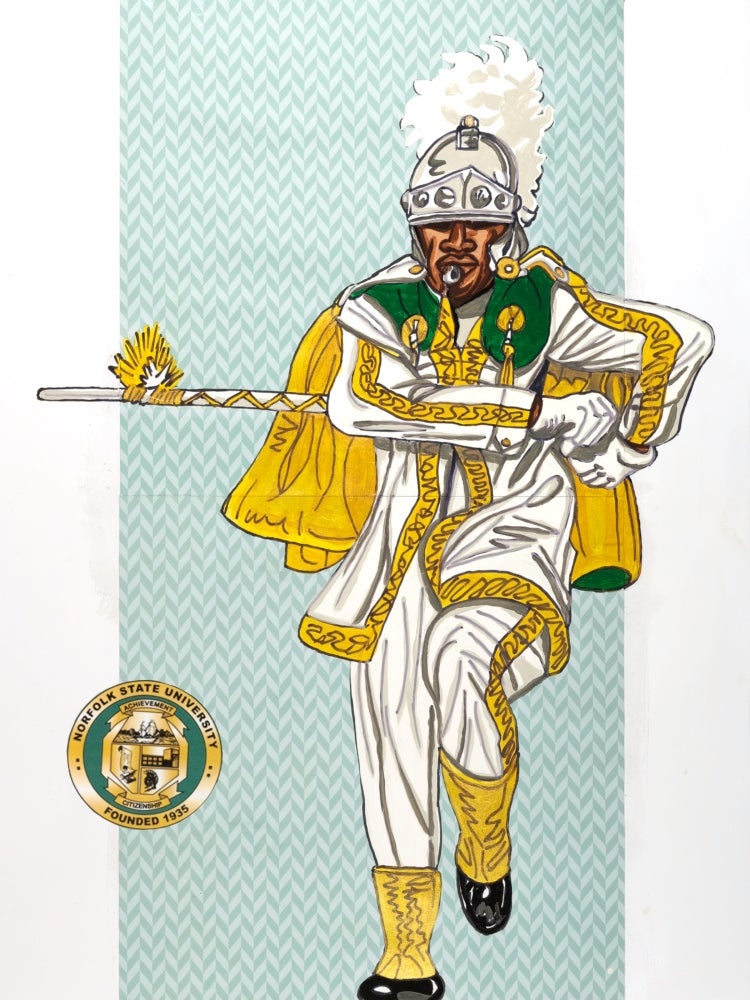
What stands out in Duncan’s work is how he captures that movement. True to his comic book inspiration, his depiction of movement and the physical agility required of HBCU marching band members nearly pops off the canvas with the exaggerated muscular and facial structure of the subjects. Deeply accentuated cheekbones run consistently throughout the works, though the positions of and number of band members fluctuate from school to school. This is seen in South Carolina State Marching Band (2023), which highlights The Marching 101. It features one posed SC State Champagne dancer in motion, alongside six actively marching instrumentalists and seven drum majors in three unique positions. Duncan captures the figures in groups of three or as an individual, expressing the diversity of movement without losing the impression of the band as a unit.
Another example of his ability to capture movement is in Alabama State University Marching Band (2024), known as the Mighty Marching Hornets, where he has three Stingettes leaping in the air, soaring to the right of the canvas, legs outstretched, feet pointed. In motion, he captures the athleticism, grace, and power of each dancer, calling attention to the unique experience of HBCU bands.
Duncan’s works, especially the large scale pieces, reflect beautifully the Southern textile and quilting traditions he sought to reference. The drum major in Texas Southern University Drum Major (2023), for example, poses dramatically against a familiar grey and white paisley pattern. The layering, also, of his work, draping subjects and school seals over each other atop a background of vibrant patterns and steadying solids.
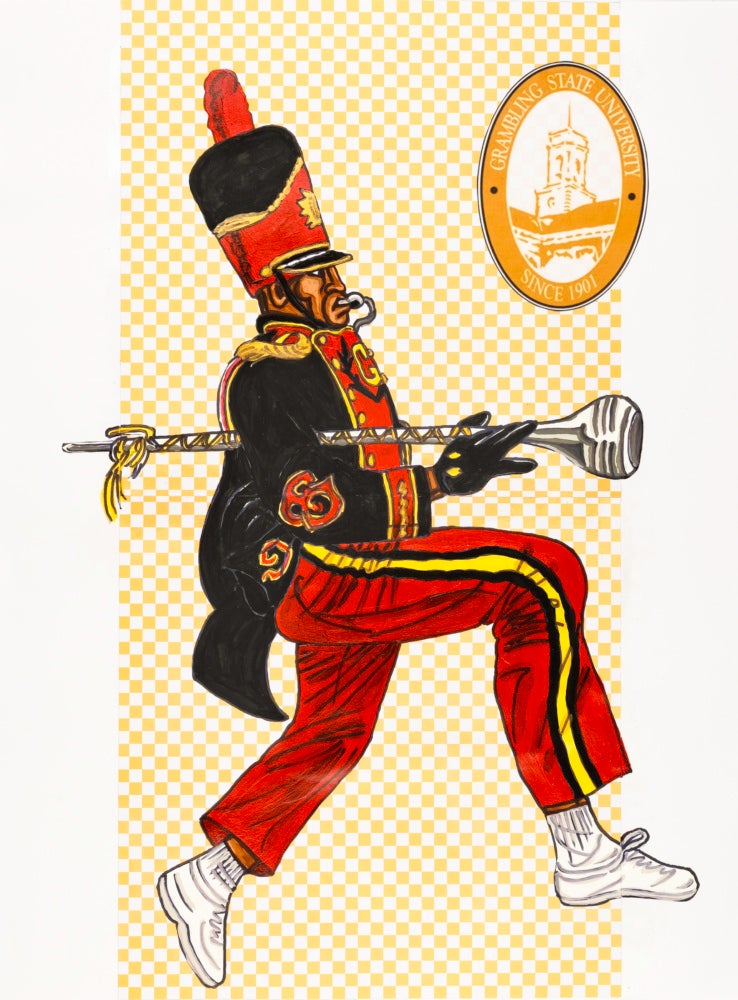
It is with extravagance that each of the subjects are presented. Duncan portrays these HBCU bands as more than just performers to entertain at a halftime show, but as esteemed and powerful figures of HBCU, Black, Southern, and American cultures and histories. They are extended beyond the reach of their school campuses and cast onto canvases as “African warriors dancing in front of the king or the queen, and a pageantry, a royalty of ceremonious splendor.” So too, perhaps, does much of the HBCU experience attempt to do for its students. HBCUs, in ways as diverse as their student bodies, seek to pour into and uplift their student bodies and Black culture at large, famously going beyond the field to instill ideas of pageantry, grace, royalty, and confidence in their students through Black Greek Letter Organizations (BGLOs or the Divine 9), campus royalty, and a number of other campus organizations and activities. The Mighty Marching Hornets claims to “bring stature and honor to Alabama State University” and Southern University’s Human Jukebox “is music in motion,” with its Dancing Dolls being known for “their stylish dance uniforms, graceful choreography, and beauty standards.” The HBCU experience and, as an extension, the HBCU marching band is an expression of the view of self, reflecting the dignity, self-image, and confidence that HBCUs have, since their inception, sought to instill into their students and into Black Americans at large.
Duncan captures that pursuit of discipline, confidence, unity, and pride that is present in the bands and on the campuses of the fifteen schools and beyond.
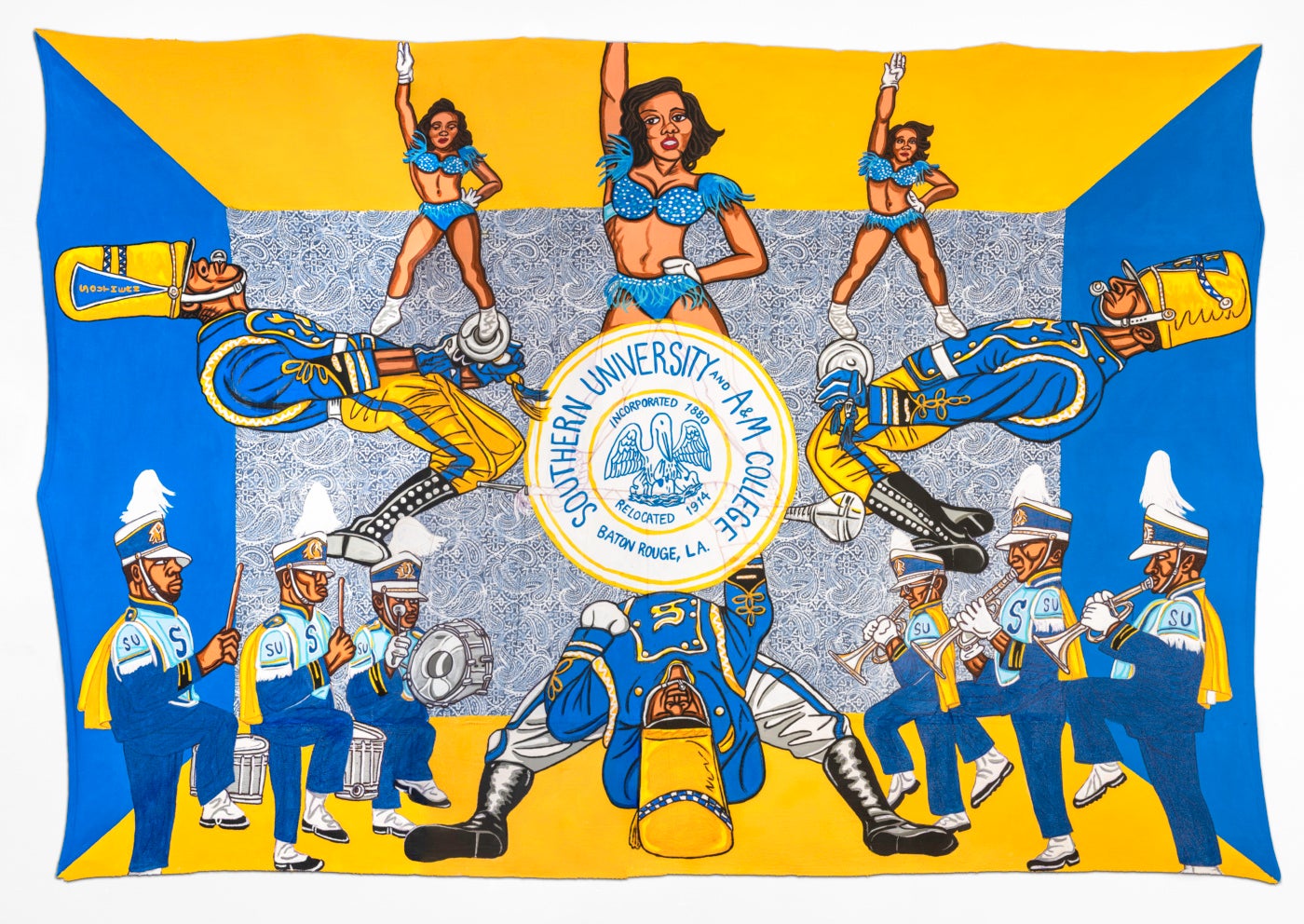
Featured are bands from Alabama State University, Alcorn State University, Bethune-Cookman University, Florida A&M University, Grambling State University, Howard State University, Jackson State University, Morehouse College, Norfolk State University, North Carolina A&T University, South Carolina State University, Southern University, Tennessee State University, Texas Southern University, and Tuskegee University.
The works hang large, proud, and colorful on the walls of the light-filled third floor of the Ogden Museum of Southern Art in New Orleans, Duncan’s birthplace.
Keith Duncan: Battle of the Bands, The HBCU Marching Band Series is on view at the Ogden Museum of Southern Art in New Orleans through August 10, 2025.


